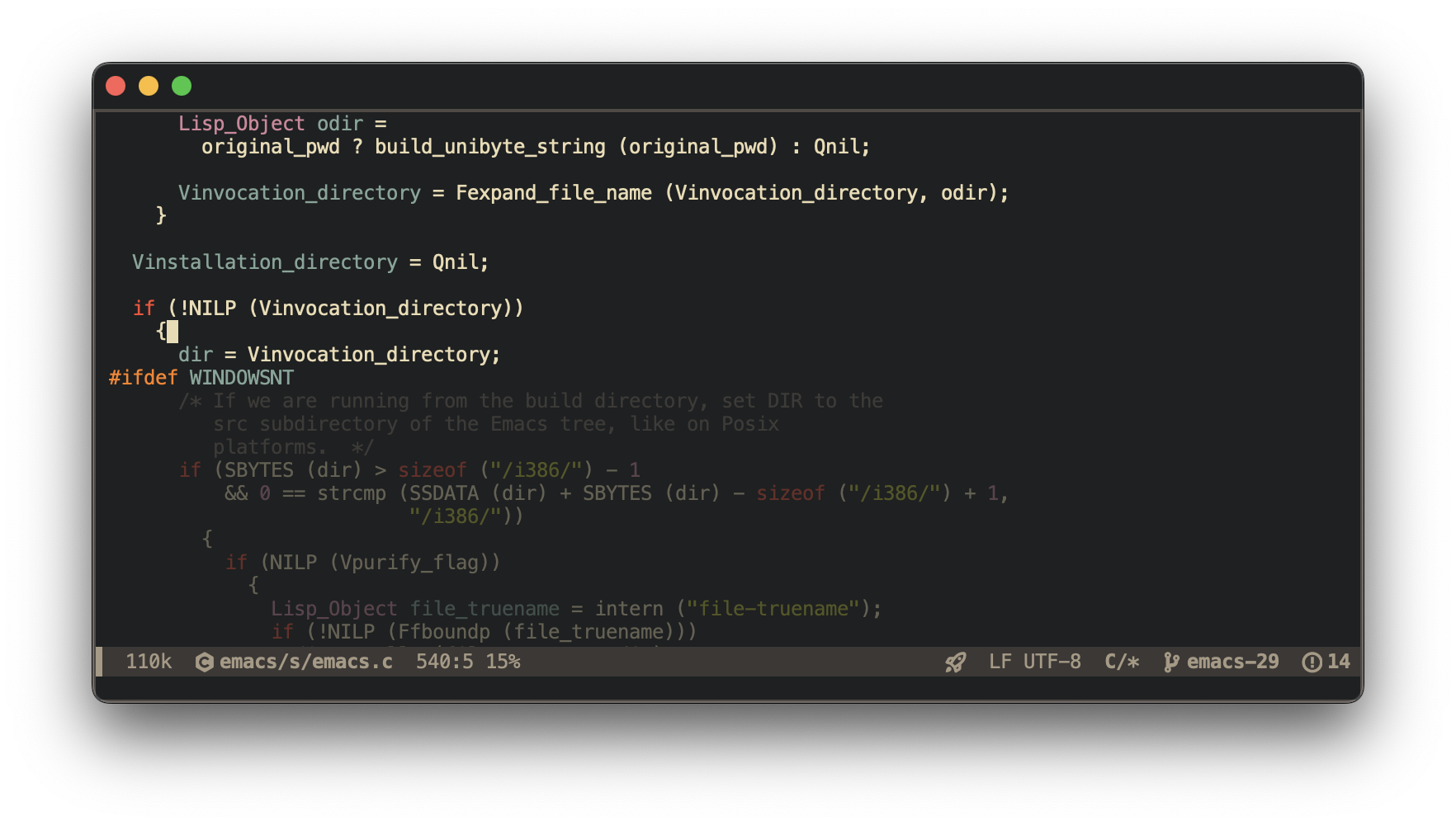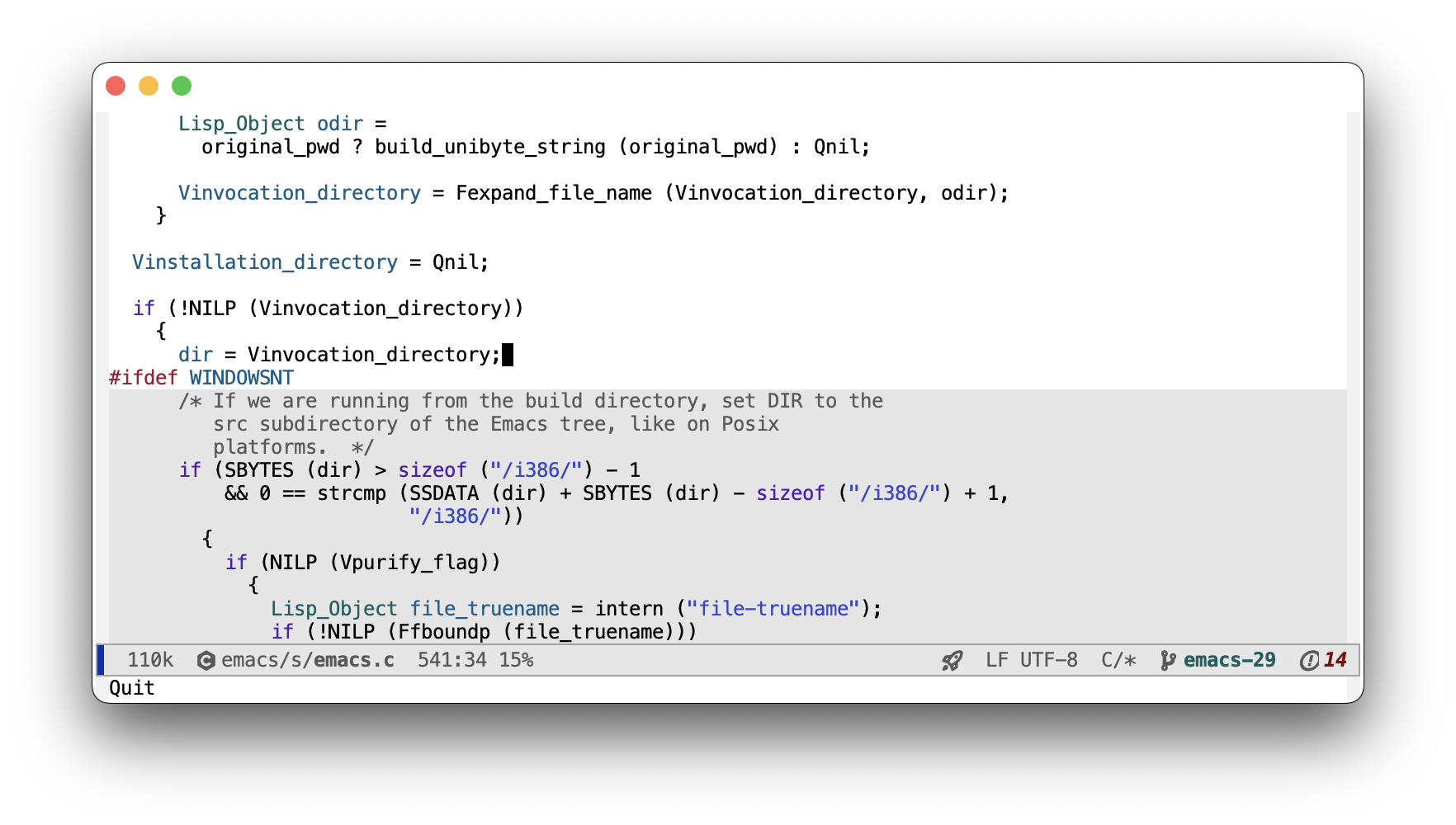Eglot extension to support the new clangd inactiveRegions LSP capability introduced in clangd-17.
Highlights inactive code in a LSP aware way, taking into account compile time includes and defines for current project.
Listens to inactiveRegions notifications and shades them with one of the available-methods:
darken-foregroundmakes inactive code semitransparent blending current foreground and background colorsshade-backgroundmakes inactive code background slightly darker or lighter depending on current themeshadowapplies the shadow face to inactive code
Inactive regions are provided by the language server so they will
honor your include paths and compile time defines. Here I'm looking at
my emacs-29 branch configured to build on MacOS and you can see
Windows code is correctly disabled.
(unless (package-installed-p 'clangd-inactive-regions)
(package-vc-install "https://github.com/fargiolas/clangd-inactive-regions.el"))You will need at least emacs 29.1 and clangd-17.
(use-package clangd-inactive-regions
:init
(add-hook 'eglot-managed-mode-hook #'clangd-inactive-regions-mode)
:config
(clangd-inactive-regions-set-method "darken-foreground")
(clangd-inactive-regions-set-opacity 0.55))As far as I know Emacs doesn't have a way to set foreground text opacity. Best would be a face attribute so that you can set it in an overlay covering each inactive region and be done with it. Unfortunately there is no attribute for this yet.
Hence darken-foreground method is a fragile and inefficient hack around
fontification: for each inactive region it looks for symbols with
different faces and applies to each of them a different overlay with a
dimmed foreground color.
It seems to work with cc and c-ts modes and I've been using it daily for more than a year now, but could totally break other modes or features I'm not aware of.
If you know a better way please do let me know.

